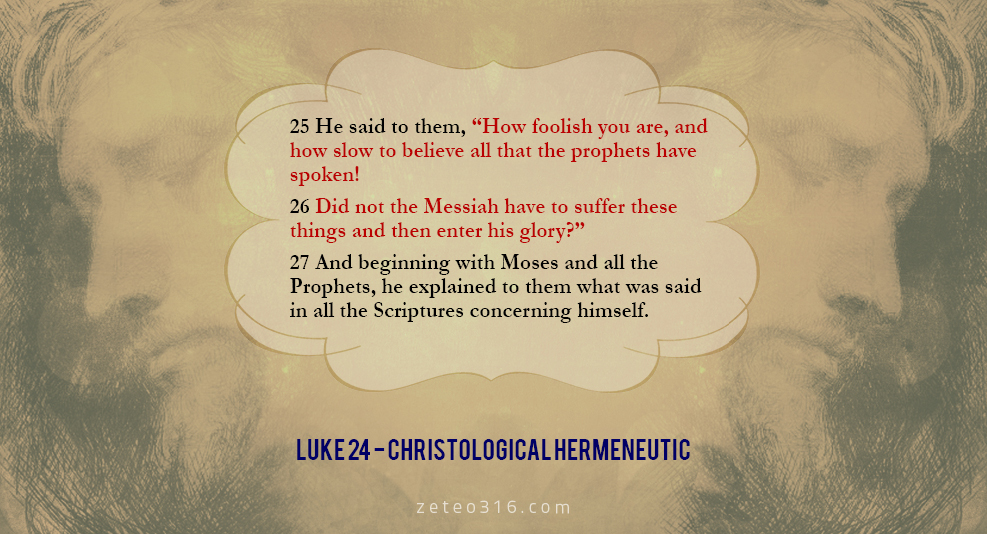Luke 24 – Christological Hermeneutic. Does Luke’s Emmaus story suggest we should interpret all the Bible from a Christological perspective?
Then He said to them, “O foolish ones, and slow of heart to believe in all that the prophets have spoken! Ought not the Christ to have suffered these things and to enter into His glory?” And beginning at Moses and all the Prophets, He expounded to them in all the Scriptures the things concerning Himself. (Luke 24:25-27
We take the position that there are passages in the Old Testament which foretold what the Messiah had to suffer. Jesus held the disciples accountable for understanding and believing them. However, others try to see Christ on every page. This has ramifications over areas such as the interpretation of prophecy, especially concerning Israel. We are indebted to Hip and Thigh (great essay by Fred Butler) for directing us to Matt Waymeyer’s article which discusses this topic at some length:
In Luke 24, the resurrected Jesus engaged in a fascinating conversation with two disciples on the road to Emmaus. During this dialogue, “beginning with Moses, and with all the prophets, He explained to them the things concerning Himself in all the Scriptures” (Luke 24:27). Later, Jesus told the Eleven that “all things which are written about Me in the Law of Moses and the Prophets and the Psalms must be fulfilled” (Luke 24:44).
For many today who believe that the Old Testament must be read in light of the New Testament, these verses in Luke 24 justify a “Christological Hermeneutic” for interpreting the Hebrew Bible. For some, this means a full-blown allegorical method of interpretation that sees pictures of Jesus and His work of redemption hidden throughout the Old Testament. To provide some examples: (a) I’ve heard preachers present the story of David and Goliath as a picture of the coming Savior who would slay the giant of sin and death. (b) A well-known reformed theologian insists that “the entire Scripture deals only with Christ everywhere, if it is looked at inwardly, even though on the face of it it may sound differently, by the use of shadows and figures.” (c) Another reformed theologian applies this very method to Exodus 25-30, insisting that the various details of the tabernacle of Moses prefigure New Testament truths about the person and work of Christ…keep reading

